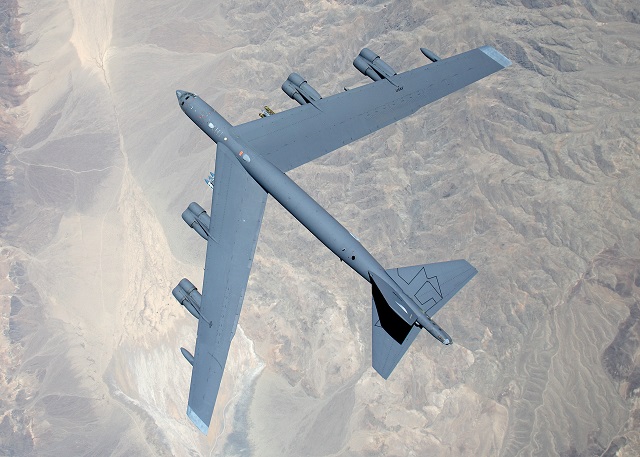Pratt & Whitney remains confident that a TF33 upgrade package it is developing would keep the fuel-guzzling Boeing B-52 bomber, an eight-engine goliath, flying into 2040 and beyond.
The aircraft was introduced in 1952 and the later H-model that remains in service today is still powered by the original P&W TF33, which celebrated its 55th anniversary of first flight in March.
P&W military engines president Bennett Croswell told Flightglobal last year that some four-engine options had been considered by the US Air Force as part of a potential re-engining programme, but the effort was abandoned. Oil prices have also dropped considerably since then.
On 15 April, Croswell confirmed that the company continues to develop an upgrade package that would reduce the cost of maintaining the long-range, nuclear-capable “Stratofortress” bomber’s engines.
The T33 was the first turbofan engine designed and produced by P&W, and some drawings date back before 1959. The JT3 commercial variant first flew on the Boeing 707 on 22 June 1960 and the TF33 powered the B-52H’s first flight one year later on 6 March, according to the company.

Boeing B-52
US Air Force
“We don’t have computer-aided drawings, so they’re all prints because it was back in the day when we developed this engine,” says Croswell. “Everything I hear is that 2040 is a given, and I wouldn’t be surprised to see [the B-52H] go further than that. It’s a completely different mission than, say, the [Northrop Grumman] B-2.”
Croswell says it would be technically difficult to swap out the B-52’s engines because it would need new nacelles, and the business case isn’t there for a complete replacement. With the cost of fuel also down, he says it would be better to reduce the maintenance cost.
“What we’re looking at right now is how to keep the Pratt & Whitney TF33 on-wing longer,” he says. “The fuel price is kind of down, so we’re looking at an improvements package for the TF33 that will keep it on-wing and allows the air force to reduce their maintenance costs.
“We think that’s a good approach and it will be less costly because you won’t have to do major airframe changes, because if you put a new engine on the B-52 you need a new nacelle.
A B-52H re-engining request for information published in 2014 and updated last July called for fuel savings of at least 10-25% and 15-25 years of use before the first scheduled depot overhaul.
In July, the air force said it was considering purchasing 650 engines, which suggests it was leaning toward an eight-engine option since there are only 76 B-52s in the service’s inventory today.
The TF33 also powers the in-service 707-300-based Northrop E-8C Joint Surveillance Target Attack Radar System (JSTARS) and 707-320-based Boeing E-3 Airborne Early Warning and Control System (AWACS).
Source: FlightGlobal.com
















